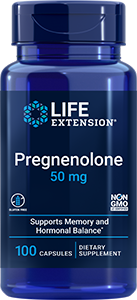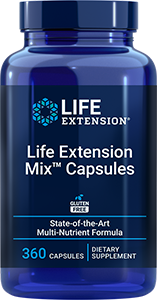 | October 13, 2009 | Low protein diet improves mitochondrial function | | A dietary regimen that is the opposite of the high protein Atkins diet was associated with a longer lifespan and improved mitochondrial function in research conducted with flies at the Buck Institute for Age Research in Novato, California. Reduced functioning of the mitochondria, which are the power plants of the cells, occurs with aging and is associated with such diseases such as type 2 diabetes and Parkinson's disease. In the October 2, 2009 issue of the journal Cell, Pankaj Kapahi, PhD and colleagues identify the mechanism of the extension of life span observed in flies whose diets were modified by lowering the level of yeast relative to sucrose (the source of carbohydrates in the flies' diets). By examining the expression of genes in restricted flies, Dr Kapahi and his associates found that, although protein synthesis was reduced on a global level, the activity of specific genes involved in the production of energy within the mitochondria increased. According to Dr Kapahi, this activity, which occurs at the level of conversion of RNA to protein, is involved in dietary restriction's protective effects. Flies receiving low protein diets showed increased activity of a protein known as d4EBP, which is part of a signaling pathway called TOR (target of rapamycin) that influences cell growth in response to the availability of nutrients. (Rapamycin, a drug that has many medical uses, was recently shown to increase the lifespan of aged mice.) While flies on a low protein diet experienced a significant extension of lifespan compared to flies whose diets were nonrestricted, knocking out the gene for d4EBP diminished the effect, and restoring d4EBP expression enhanced it. The findings question the wisdom of popular high protein weight loss diets. "In flies, we see that the long-lived diet is a low protein diet and what we have found here is a mechanism for how that may be working." Dr Kapahi stated. The study is the first genome-wide investigation of how proteins are translated in dietary restricted organisms. "Our study shows that dietary restriction can enhance mitochondrial function hence offsetting the age-related decline in its performance," Dr Kapahi concluded. "There have been correlative studies that show mitochondria change with dietary restriction; this research provides a causal relationship between diet and mitochondrial function." | |  |
| Of all the potential anti-aging approaches, none have so far shown the promise of caloric restriction. Researchers initially speculated that animals who consumed fewer calories would also expend less energy. However, careful measurements of the energy expenditures of animals on CRON (calorie restriction with optimal nutrition) indicate that they use as much or more energy than their free-feeding counterparts (Duffy PH et al 1991; Masoro EJ et al 1982; Masoro EJ et al 1992; McCarter RJ et al 1992). In spite of the comparable energy expenditure, however, CRON reduces the cellular damage that is typically associated with higher energy expenditure, including accumulation of ROS products, lipid peroxidation, oxidized proteins, and other measures of cellular aging (Cook CI et al 1998; Dubey A et al 1996; Matsuo M et al 1993). When CRON is begun in young animals, they remain smaller and leaner than their free-feeding counterparts (Weindruch R et al 1988). They also withstand a number of stressors better than their free-feeding counterparts (Berg TF et al 1994; Heydari AR et al 1993; Masoro EJ 1998). Young rodents consuming 40 percent fewer calories than their free-feeding counterparts will generally experience about a 50 percent increase in their life spans. Regardless of when CRON is started, its benefits appear to be proportional to both the degree and duration of caloric restriction (Merry BJ 2002). Thus, health benefits might be expected even when CRON is started late in life (Rae M 2004). Since the longevity response to CRON appears to be conserved across the animal kingdom, primates and humans will likely benefit from CRON as well. Increased life span in yeast can be induced by adding resveratrol, an antioxidant found in red wine, to their growth medium. These results have been replicated in both worms (Caenorhabditis elegans) and pomace flies (Drosophila melanogaster) (Wood JG et al 2004), suggesting that the action of resveratrol may be equivalent to that of caloric restriction. Whether resveratrol will prove to be a caloric restriction agent in mammals, primates, and humans remains to be seen. Recent studies at the BioMarker Pharmaceuticals laboratory have shown that a nutrient formula from the Life Extension Foundation that contains extracts of grape seed and skin, a whole red grape resveratrol extract, vitamin C, and calcium (from calcium ascorbate) can produce many of the gene expression effects found in mice on CRON. Studies funded by the Life Extension Foundation at the Chinese Academy of Sciences in Beijing have shown that this formula can improve the strength and coordination of pomace flies (D melanogaster) afflicted with a motor disorder that is similar to Parkinson’s disease in humans. This formula can protect mitochondria (the energy-generating power plants in the cell) isolated from rat livers from damage caused by exposure to carcinogens. |
|  |
  | | Pregnenolone is biochemically the “mother hormone.” It is made directly from cholesterol within the mitochondria of the adrenal glands and, to a lesser degree, the nervous system, with the help of the cholesterol side chain cleavage enzyme, p450scc. Pregnenolone is a precursor to various hormones, such as progesterone, mineralocorticoids, glucocorticoids, androgens, and estrogens. So it can help the body maintain normal hormone levels, which in turn helps numerous body functions. | | |   | Consumers take dietary supplements to obtain concentrated doses of some of the beneficial nutrients (such as folic acid) that are found in fruits and vegetables. Many multivitamins, however, do not provide all the vital plant components that scientists have found are needed to maintain good health. Life Extension Mix is formulated based on published findings showing that consuming lots of fruits and vegetables dramatically lowers the risk of health problems. Life Extension Mix provides concentrations of the fruit and vegetable extracts that researchers have found protect against a wide variety of cellular insults. A Johns Hopkins study found from 1999-2002, only 28% and 32% of American adults met the United States Department of Agriculture (USDA) guidelines for fruit and vegetable intake, respectively. | | | |  | | Life Extension Update | | What's Hot | | Life Extension magazine | |















